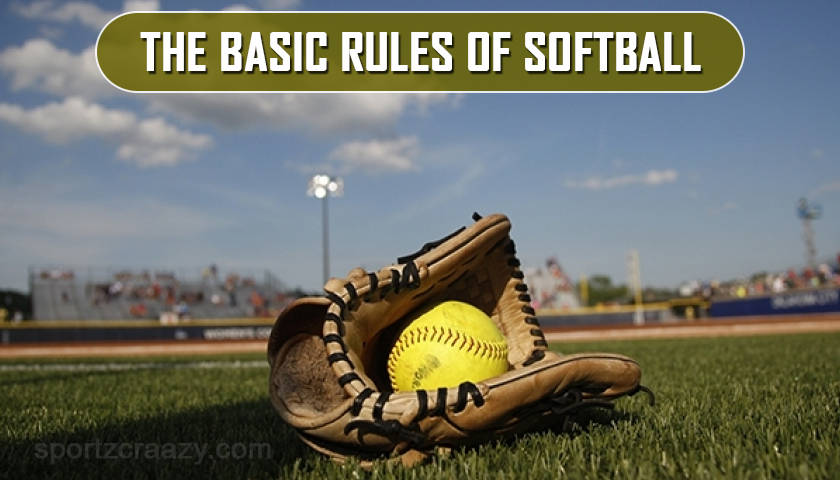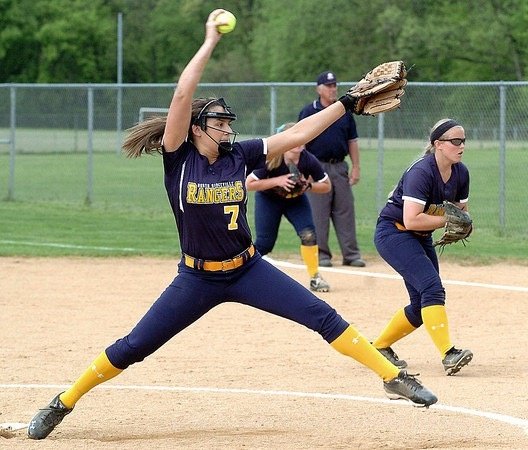Softball is a variation of the sport baseball. It’s more commonly played at a recreational level and played on a pitch smaller than that of baseball. Whilst the rules are very similar there are some that differ. The sport is widely played throughout North America but there are also professional leagues played in Asia, Europe and South America.
Need to learn the rules of softball? We’ve got you covered. Check out our article covering the basic softball rules, great if you’re a beginner just getting started.
The Basic Rules of Softball
- Two teams (of nine players) alternate turns at batting and fielding (often called defense).
- The aim for the team batting is to advance a runner around all bases to the home plate to score runs.
- The defending team tries to defend its bases by getting three outs and not allowing the batting team to score.
- The team that scores the most runs in seven innings wins. (A tiebreaker procedure comes into play if the scores are tied after the seventh innings.)
- Each team’s innings ends when three of its batters have been ruled out and then the team that was defending goes in to bat.
The Playing Field
- There are four bases (first base, second base, third base and home plate) on the field of play.
- The lines between the bases are generally 45 to 60ft (approximately 12 to 18m) apart and when joined they form a ‘diamond’.
- Inside the diamond is the infield which contains the pitcher’s plate from which the pitcher throws the ball underarm; outside the baselines is the outfield.
- Any ball going outside the first or third baseline is a foul ball (runners are not allowed to advance and the batter gets another try unless the ball was caught in the air, in which case they are out).
Pitching Rules in Softball
- There is no limit on pitch count per game. No limitations playing other positions after pitching.
- A pitcher can pitch a maximum of 9 innings per game, max 18 per week.
- 1 pitch delivered is considered pitching in an inning. Pitching more than 2 innings, the pitcher is eligible to pitch again on 2nd calendar day.
- No more than 5 pitchers allowed per team in a game.
- A pitcher is not allowed to intentionally delay the game by throwing to players other than the catcher when a batter is in the box.
- A legal pitch delivery is delivered to the batter in an underhand motion.
- Both feet must be on the ground within or partially within the 24-inch length of the pitcher’s plate.
- The shoulders must be in line with 1st and 3rd base at the set to begin pitch.
- The pitcher must take a position with her pivot foot in contact with the pitcher’s plate. The non-pivot foot must be on or behind the pitcher’s plate.
- While at the pitching plate, the pitcher must take any signal from catcher or coach with hands separated. The ball must remain in the glove or pitching hand.
- The pitcher must hold the ball in one or both hands in front of the body for not less than one second and not more than 10 seconds before starting delivery. This is referred to as “set”.
- A backward step may be taken before or simultaneously with the hands being brought together. The pivot foot must remain in contact with the pitching plate at all times prior to the forward step.
- While delivering the ball the pitcher may take one step with the non-pivot foot with the release of the ball. It is not considered a step if the pitcher slides the pivot foot across the pitcher’s plate toward the batter, or the pivot foot turns and slides to push off pitcher’s plate. Raising the foot off pitching plate and then returning foot creates a rocking motion and is an illegal motion.
- The pitcher is not considered in pitching position unless the catcher is in position to receive a pitch.
- The pitcher is not allowed to take pitching position on pitcher’s plate without possession of the ball.
- The pitch starts when one hand is taken off the ball after the hands have been placed together.
- The pitcher is not allowed to make any motion to pitch without immediately delivering the ball to the batter.
- The pitcher cannot return the hands together again after separating them from the set position.
- The pitcher is not allowed to make 2 revolutions of the arm in the windmill motion.
- Pushing off with the pivot foot from any other spot than the pitcher’s plate is illegal. This includes a “crow hop” when the pitcher hops off the plate before the forward motion.
- The pivot foot must remain in contact with or push off and drag away from pitching plate until the front foot touches the ground. When the pivot leaves the ground, it is considered a “leap” and is an illegal pitch.
- The pitcher has 20 seconds to release the next pitch after receiving the ball in the pitcher’s circle or the umpire indicates “play ball”.
- The pitcher is allowed 8 “warm-up” pitches at the beginning of each inning when taking the field.
- A batter hit by a pitch is awarded first base but is not considered an illegal pitch.
- There are no “baulks” in softball.
These softball rules and regulations have been presented in a simplified version. However, it may feel different while actually playing on the field, even if the rules remain the same. Practical hands-on experience in the field provides a real taste of getting acquainted with the rules that have been set up for the game.
Also Check:










